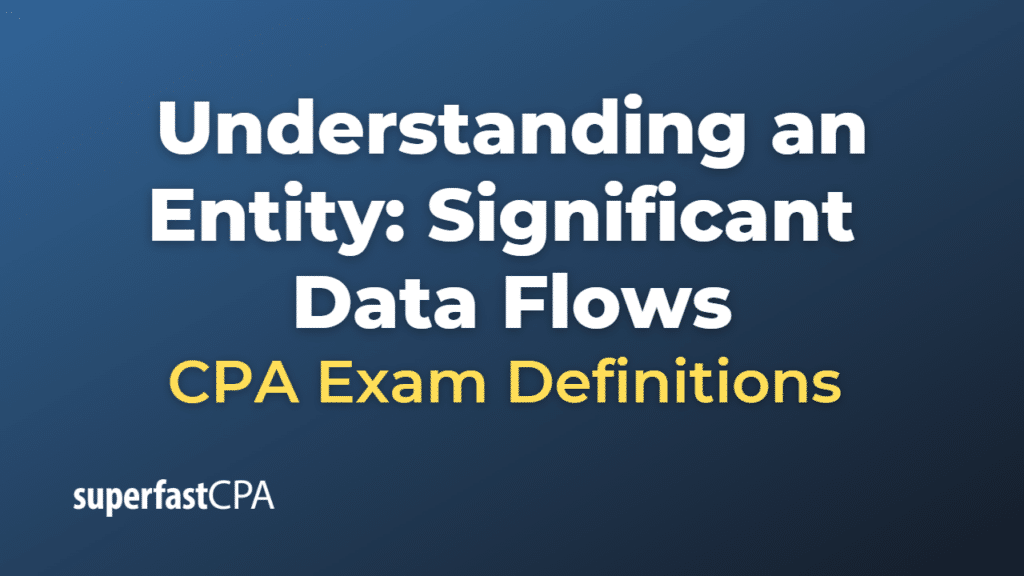Understanding an Entity: Significant Data Flows
An auditor identifies and documents significant data flows that directly or indirectly impact an entity’s financial statements to better understand the flow of financial data and assess the risks of material misstatements. The following steps outline a systematic approach to achieve this objective:
- Understand the entity’s business and industry: Gain an understanding of the entity’s business, industry, and the external environment, including its business model, products, services, and key market drivers. This information helps to identify the significant data flows and the associated risks.
- Identify significant business processes: Identify the key business processes related to revenue, expenses, assets, liabilities, and equity that directly or indirectly impact the financial statements, as previously discussed in the answer above.
- Understand the entity’s information systems: Obtain an understanding of the entity’s information systems, including the applications and technologies used for processing, storing, and reporting financial data. Consider the data inputs, processing, and outputs for each significant business process.
- Identify data sources and destinations: Determine the primary data sources for each significant business process, such as transactional systems, spreadsheets, or third-party data feeds. Identify the destinations where financial data is ultimately recorded, consolidated, and reported, such as the general ledger or financial reporting system.
- Map data flows between systems and processes: Create a visual representation or narrative of the flow of financial data between systems and processes, illustrating the data’s journey from its initial entry into the entity’s systems through to its final reporting in the financial statements. This may involve the use of data flow diagrams, process flowcharts, or system architecture diagrams.
- Evaluate data controls and interfaces: Assess the controls in place to ensure the accuracy, completeness, and validity of data as it flows between systems and processes, including input controls, processing controls, and output controls. Consider the risks associated with data interfaces, data transformation, and data integration points, and how the entity has addressed these risks through its control activities.
- Perform walkthroughs and interviews: Conduct walkthroughs of the significant data flows, observing the activities and control procedures in place. Interview key personnel involved in these processes to gain insights into their roles, responsibilities, and the design and operation of the controls.
- Document significant data flows: Create clear and comprehensive documentation of the significant data flows identified, including diagrams or narratives that detail the data sources, destinations, interfaces, and related control activities. This documentation should also highlight the risks associated with each data flow and how the entity has addressed these risks through its control activities.
- Assess the risks of material misstatements: Based on the understanding of significant data flows and the control environment, identify and assess the risks of material misstatements at the assertion level for each relevant financial statement item. This information will be used to plan further audit procedures, including tests of controls and substantive procedures.
By following these steps, auditors can systematically identify and document significant data flows that directly or indirectly impact an entity’s financial statements, providing a solid foundation for the planning and execution of the audit.













